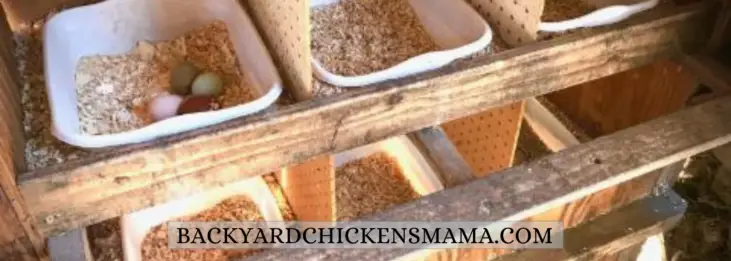
Follow my “Simple Guide to Setting Up the Best Hen Nesting Boxes” and your happy hens will bless you with an increase in her egg production! It is important to have the proper number, size, height, location and laying material available for your nesting boxes. If any of these is “off” it can affect the amount of eggs your hens are laying.
Location of Hen Nesting Boxes
Ideally, hen nesting boxes should be placed in a dark location within the chicken coop, lower than the roosts, but not beneath them. A laying hen needs her nesting box to be in a location that is secluded enough that she has privacy, up high enough that predators are not going to get at her while she is laying and in an area that it is not going to get contaminated with poop.
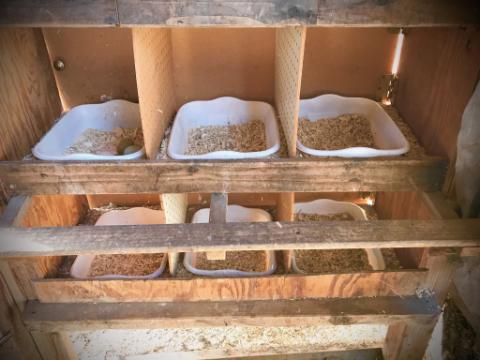
Where do you put nesting boxes?
1. Nesting boxes should be at a height lower than where they roost at night. If their nesting box is higher than the roost they are likely to set up camp for the night in their nesting box. This is a bad habit because chickens poop a lot at night and the last thing you want is to be changing your nesting material every morning.
2. Nesting boxes should not be under a roost. If it is located under a roost, it will get pooped on by sleeping chickens.
3. Nesting boxes should be up off the ground. This is to deter predators from getting to them while laying and also to protect the eggs from being trampled by other chickens scratching around in the coop.
4. Nesting boxes should be up high enough that you can comfortably collect the eggs, at least 18″. Placing them too low can make it more difficult to reach into the box to collect eggs, especially if you have back problems or are older.
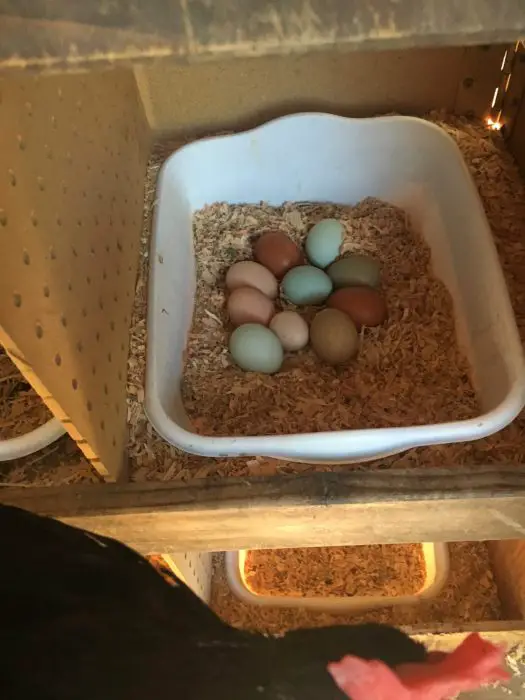
5. Choose a location that the hen will feel secure. This would not be in an area next to where there are barking dogs or other frequent loud noises.
6. Choose a dark location. Hens like their privacy when they are laying an egg! Some people even put chicken curtains up!
7. Choose a quieter area. Don’t choose an area with a lot of foot traffic or a lot of activities going on.
If you have Silkie chickens, they have separate needs than a regular chicken. For more information on how to set up a chicken coop to meet the needs of your Silkies, please read my article:
Proper Number of Hen Laying Boxes
As a rule of thumb, the proper number of laying boxes is 1 laying box for every 4-5 laying hens. No matter how many laying boxes you have, there will always be a line up for that “one special laying box” that all of the hens will wait for!
| # LAYING HENS | # NESTING BOXES |
|---|---|
| 1-4 | 1  |
| 5-8 | 2  |
| 9-12 | 3    |
| 13-16 | 4     |
| 17-20 | 5      |
| 21-24 | 6       |
| 25-28 | 7        |
| 29-32 | 8         |
How high should chicken nesting boxes be?
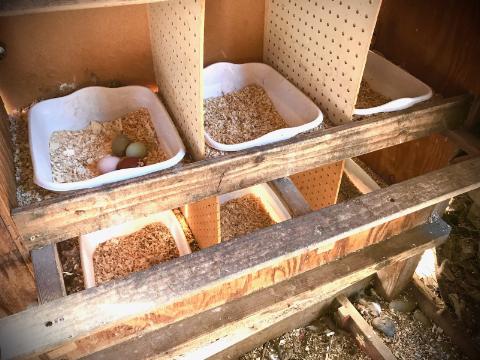
Nesting boxes should be up off the ground, at least 18″, to decrease the chances of predators getting into them. Keep in mind, if you are stacking the nesting boxes on top of each other that you want the top nesting box to still be lower than where chickens roost at night. Otherwise, you will have hens trying to roost in their boxes.
Keeping the nesting boxes up off of the ground will help lessen your hens fear of being attacked while laying. Hens feel vulnerable when they are low to the ground, so they will seek an area higher up in the coop to lay if you do not provide it for them.
Size of Hens Nesting Boxes
It is important to make sure that your nesting boxes are large enough for your hens to fit comfortably inside, but not too large that another hen will try to squeeze in to lay beside her. Too many hens in one nesting box can lead to broken eggs.
What size should hens nesting boxes be?
For a standard size hen, between 5-10 lbs., the proper size nesting box is 12″ x 12″ cube. For larger breeds that weigh over 10 lbs., such as Jersey Giants, Cochins and Orpingtons, it is recommended to have a nesting box 12″ x 14″.
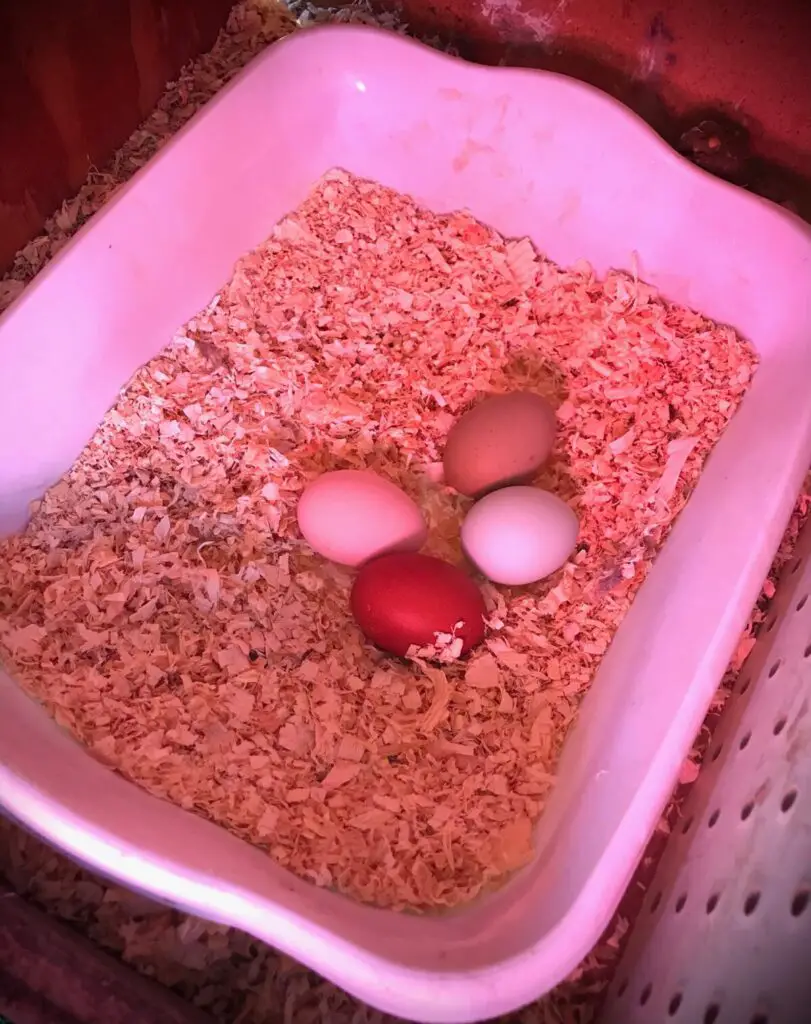
Bedding for Nesting Boxes
Nesting boxes should have some sort of nesting material inside of it for your hen to be comfortable when she lays. By having nesting material you are providing the hen a soft place for her to lay her egg, decreasing the chances of broken eggs. Common nesting materials include pine or cedar shavings, straw, hay, sand, shredded paper or leaves and grass clippings.
| COMMON NESTING MATERIALS |
|---|
| PINE SHAVINGS |
| CEDAR SHAVINGS |
| STRAW |
| HAY |
| SAND |
| SHREDDED PAPER |
| SHREDDED LEAVES |
| GRASS CLIPPINGS |
What is the best material for nesting boxes?
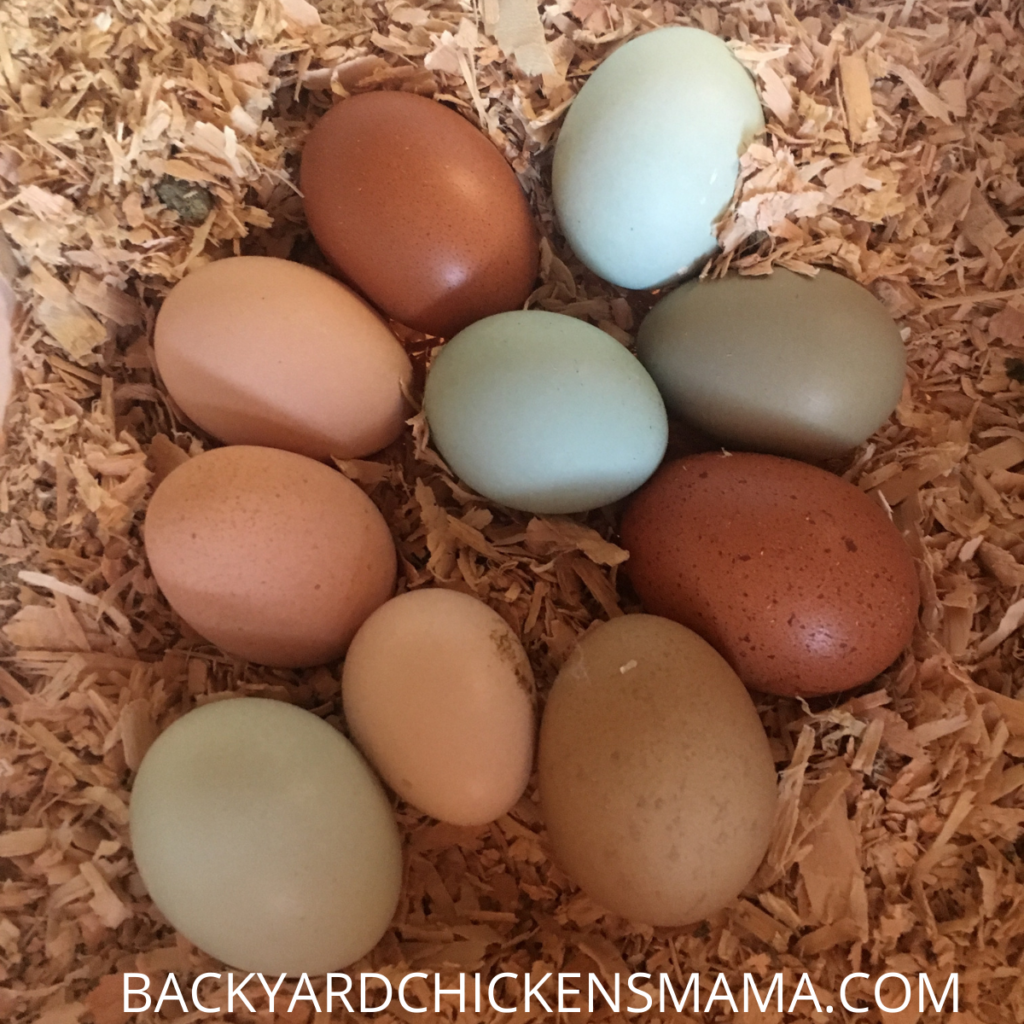
The best bedding material for a nesting box, in my opinion, would have to be pine shavings. Pine shavings are comfortable, soft and absorbent. They provide a comfortable place for your hens to lay and a soft landing spot for her eggs. They are also good at absorbing wetness or odors should your hen decide to poop in there.
Many people also choose to add aromatic herbs to the nesting boxes. These herbs can help in a variety of ways: deter rodents, stimulate egg production, calm, reduce stress and relax your hen.
| HERB | BENEFITS |
|---|---|
| LAVENDER | CALMING, STRESS RELIEVER, INSECT REPELLANT |
| BASIL | REPELS FLIES AND INSECTS, CALMING |
| ROSEMARY | NATURAL DEODORIZER, RESPIRATORY SUPPORT, INSECT REPELLANT |
| MINT | NATURALLY LOWERS BODY TEMPERATURE, INSECT AND RODENT REPELLANT |
| OREGANO | COMBATS SALMONELLA, E-COLI, COCCIDIA AND BRONCHITIS |
| PARSLEY | LAYING STIMULANT |
| FENNEL | LAYING STIMULANT |
| SAGE | COMBATS SALMONELLA, ANTI-PARASITIC |
| LEMON BALM | CALMING, RODENT REPELLANT |
| CATNIP | INSECT REPELLANT |
| BEE BALM | CALMING, ANTI-BACTERIAL, ANTICEPTIC |
| BAY LEAVES | ANTI-MICROBIAL, ANTI-FUNGAL, INSECT REPELLANT |
| GARLIC | STIMULATES LAYING, ANTI-FUNGAL |
Related Questions
When should you open nesting boxes?
Since most hens begin to lay eggs around 18 weeks of age, you should make sure that nesting boxes are available for your hens by 17 weeks of age. This way they can get used to them and when the time comes for them to lay they will know where to go.
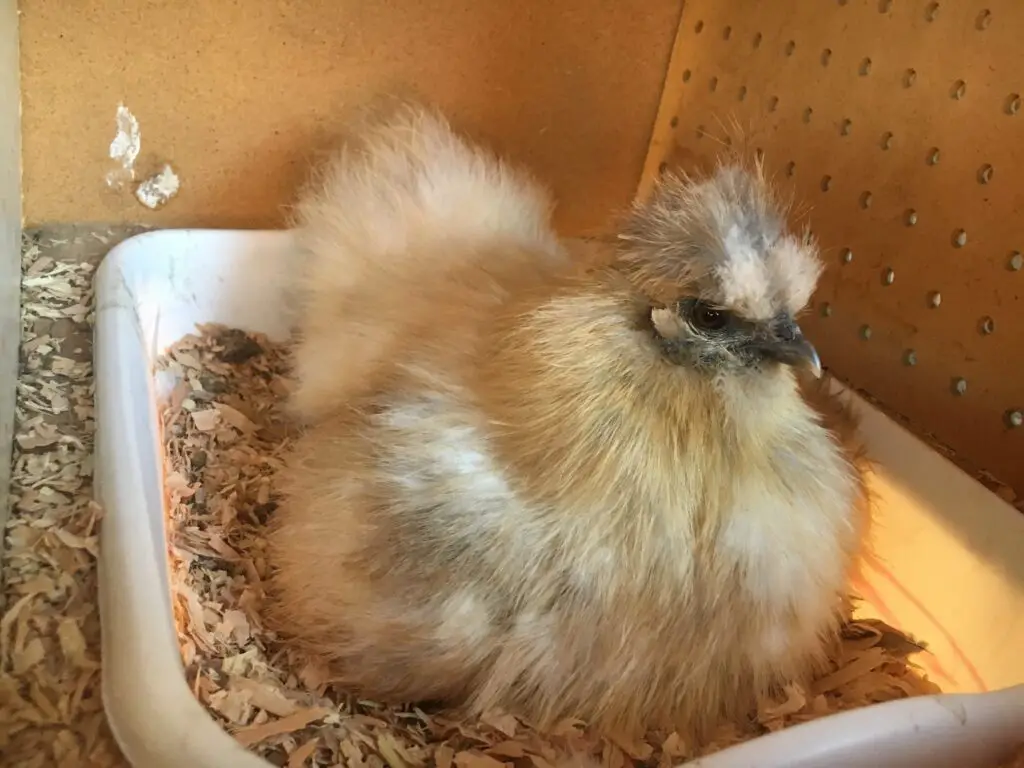
How do you encourage birds to use a nesting box?
- Make sure that you have enough nesting boxes available for the amount of hens you have.
- Place a “dummy egg” in the nesting box to teach them this is the place to lay.
- Provide a nesting box that is in a quiet, dark location.
- Nesting box should be up off of the ground(but below roost level).
- Nesting box should be filled with a comfortable, soft bedding.
Conclusion: Guide for Setting Up Your Nesting Boxes
To encourage your hens to lay in their nesting boxes, you should provide the proper number of boxes and locate them in a dark, quiet place. Nesting boxes should be at least 18″ off the ground, but not higher than the level of their roost. Use a soft, absorbent bedding and a nesting box that one hen can fit in comfortably.
By following these guidelines you will make your hens feel more at ease about laying and they will provide you with an abundance of farm fresh eggs!

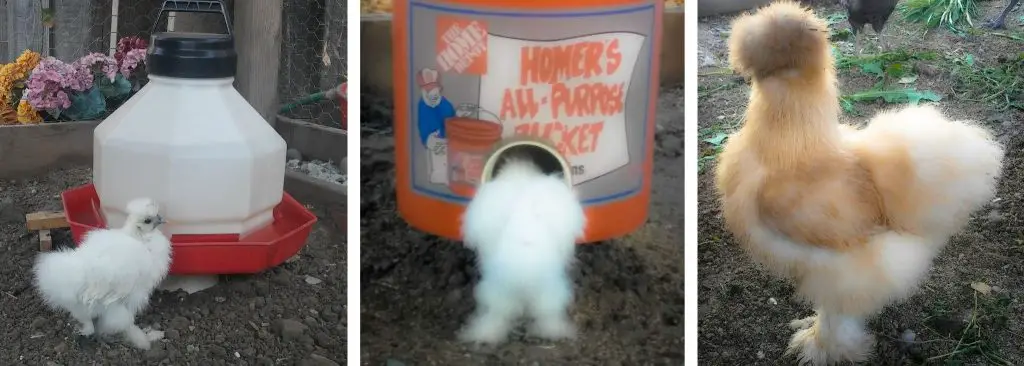
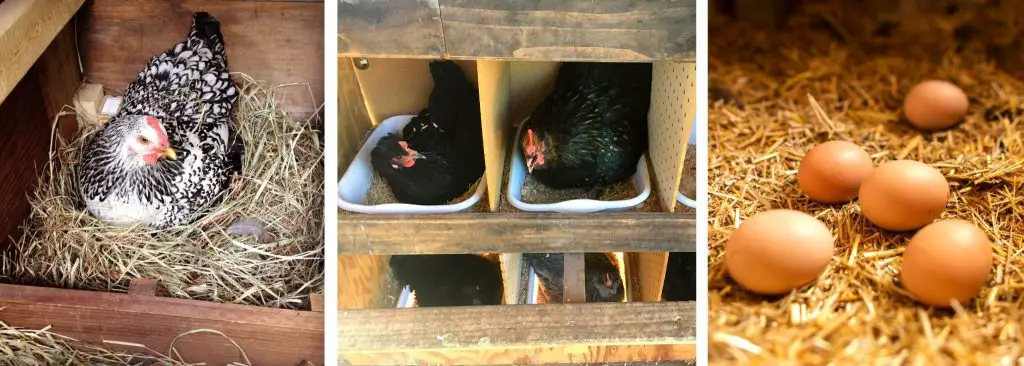

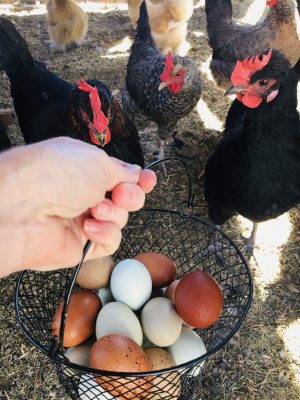

Thanks so much for always posting
Such informative articles!
Of course, Amy! I’m glad that you are following me. 😀